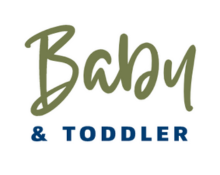
About Lesson
Breast milk supply and demand is a fundamental concept in breastfeeding. It refers to the dynamic relationship between how much milk your body produces and how much milk your baby consumes. Understanding and managing supply and demand is key to maintaining a healthy milk supply. Here’s an overview:
Supply and Demand Basics:
- Breast milk production operates on the principle of supply and demand. The more milk that is removed from the breasts, the more milk the body produces.
- Your body constantly produces milk, but the amount produced can increase or decrease based on the demand for milk.
Establishing Supply:
- In the early days after birth, your body begins to establish milk production. Frequent and effective breastfeeding stimulates your breasts to produce more milk.
- Breastfeed your baby on-demand, usually 8-12 times per 24 hours, to initiate milk production and ensure an adequate supply.
-
Milk Removal:
- Effective milk removal is crucial for maintaining milk supply. When your baby latches onto the breast and suckles effectively, it signals your body to produce more milk.
- Ensure a proper latch to help your baby extract milk efficiently. Seek assistance from a lactation consultant if you need support in achieving a good latch.
Responsive Feeding:
- Follow your baby’s cues for feeding. Feeding on-demand, rather than on a strict schedule, helps establish and maintain milk supply.
- Look for hunger cues such as lip-smacking, rooting, hand-to-mouth movements, and restlessness, and offer the breast when your baby shows these signs of hunger.
Cluster Feeding and Growth Spurts:
- Babies often go through growth spurts when they need more milk. During these periods, they may feed more frequently and seem more hungry.
- Cluster feeding, where your baby wants to feed more often for a period of time, is normal and helps stimulate your body to produce more milk to meet the increased demand.
Pumping and Milk Expression:
- If you’re separated from your baby or need to supplement breastfeeding, regular pumping or milk expression sessions can help maintain milk supply.
- Aim to mimic your baby’s feeding patterns by pumping as frequently as your baby would feed, usually every 2-3 hours, to signal your body to produce milk.
Factors Affecting Milk Supply:
- Several factors can influence milk supply, such as stress, fatigue, certain medications, illness, and hormonal changes. Taking care of your physical and emotional well-being is important for maintaining a healthy milk supply.
Remember, every breastfeeding journey is unique, and milk supply can vary among individuals. Trusting your body’s ability to produce milk and seeking support from lactation consultants or healthcare providers can help you navigate any challenges and ensure a successful breastfeeding experience for you and your baby.
